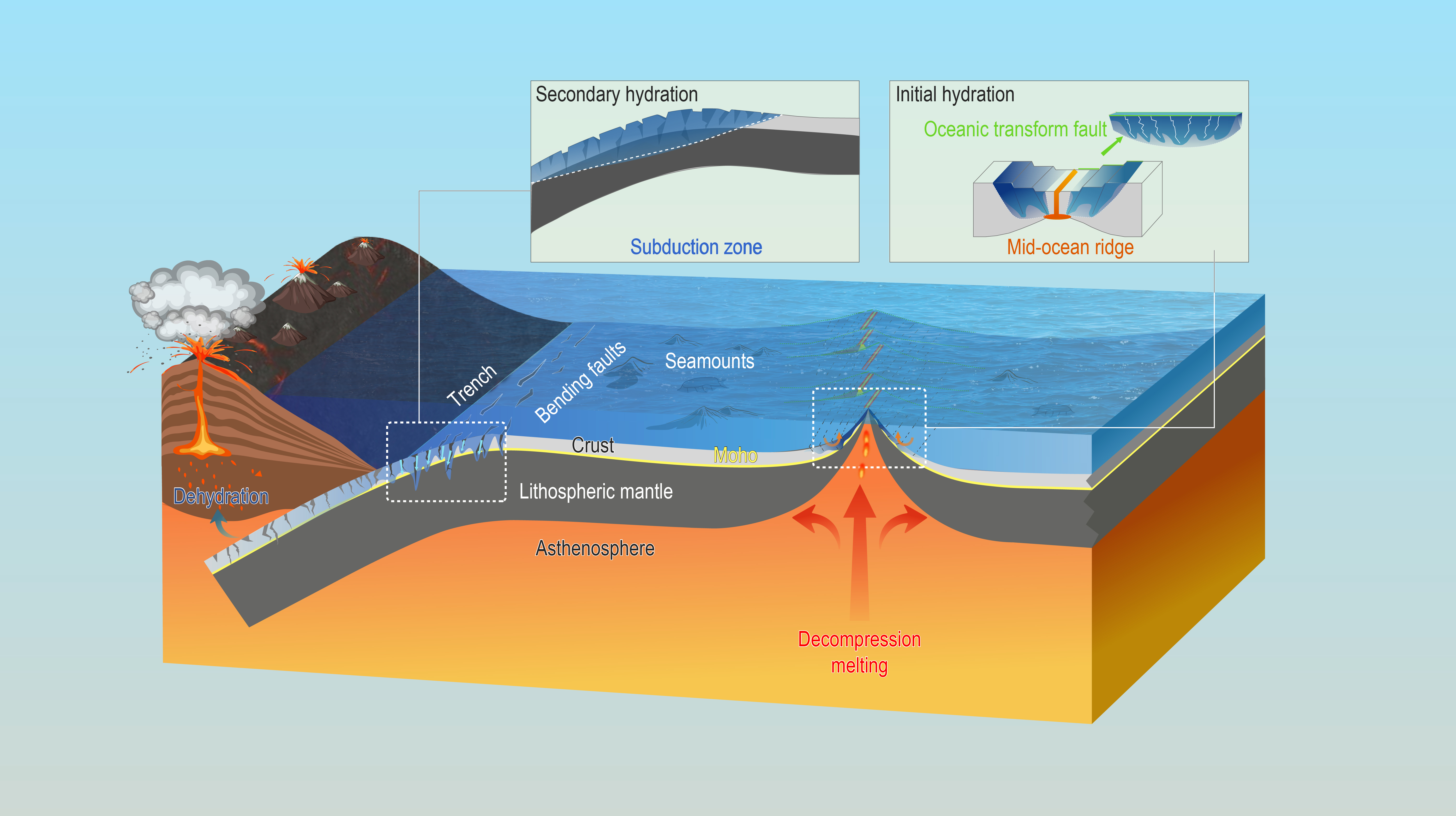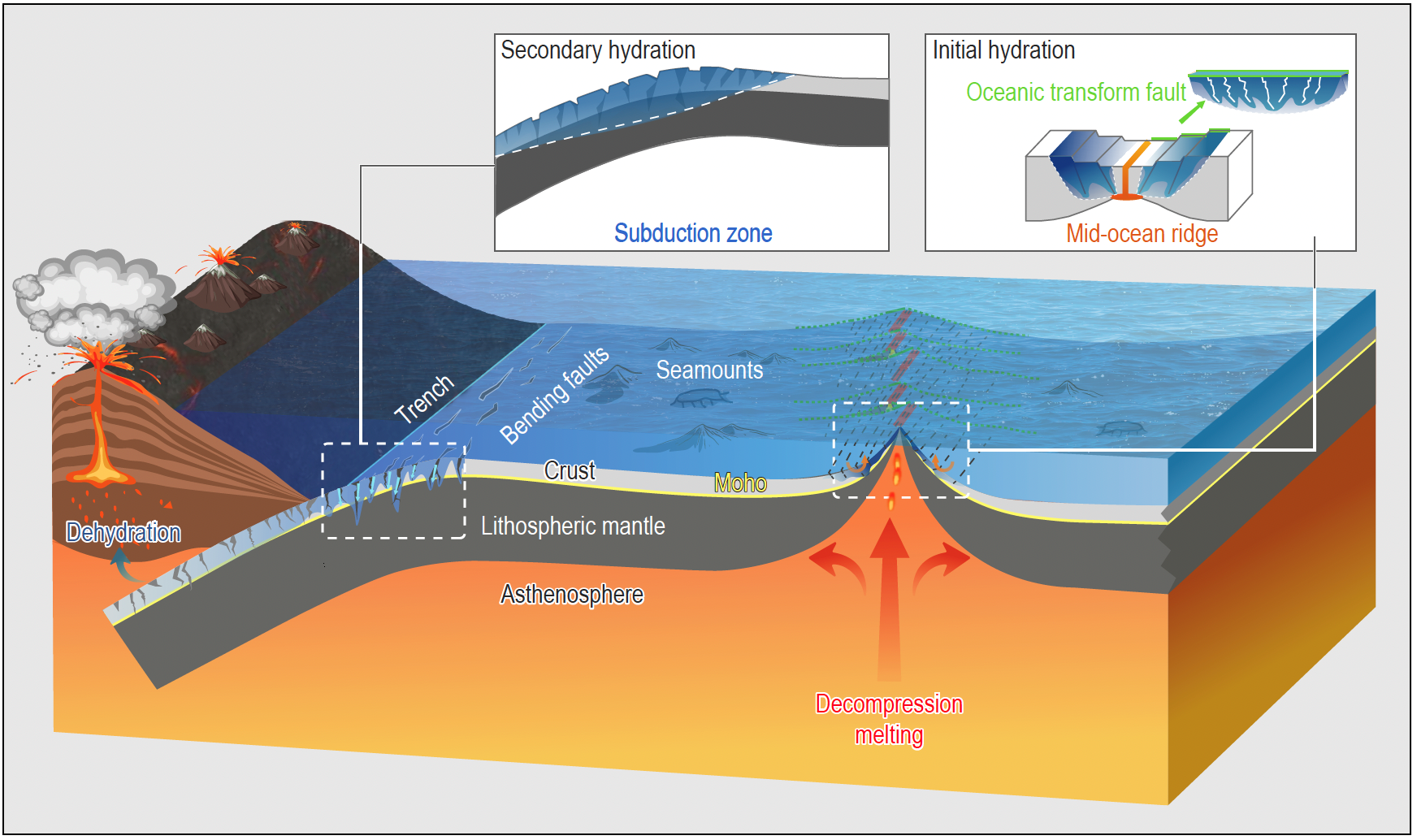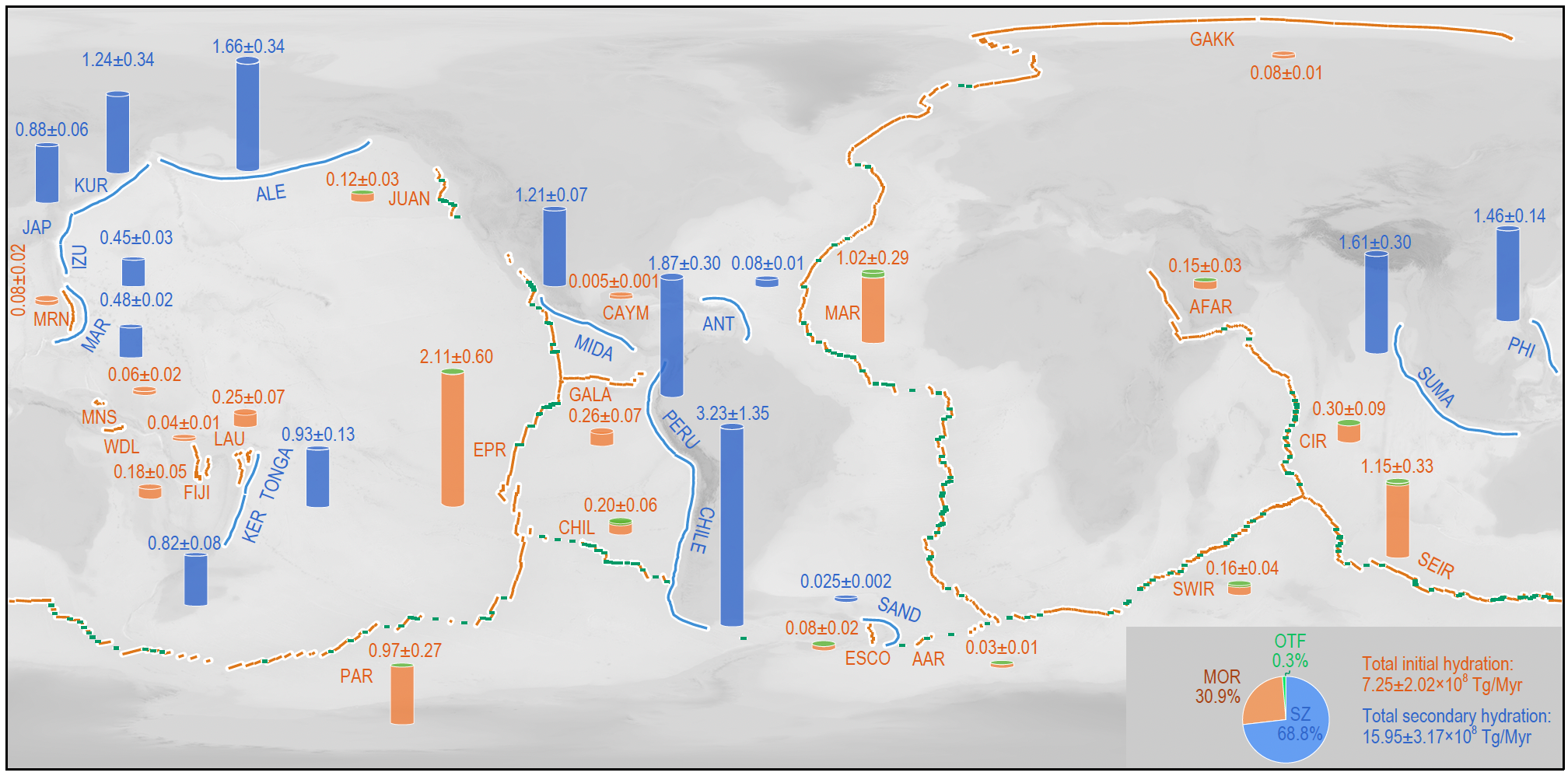Water is crucial to Earth’s surface and interior processes, facilitating plate tectonics and making the Earth a habitable planet. Seawater penetrates into the oceanic lithosphere through fractures on the seafloor and migrates along faults and pores. The hydration process weakens the crustal strength and alters mantle properties. Specifically, it influences seismicity by changing the pressure and friction of rocks, and triggers magma generation by lowering the mantle solidus and viscosity. The distribution of water governs the style of convective flow and distinct tectonic behavior of the Earth. Hence, a quantitative estimation of the water input budget of the oceanic lithosphere is required to study the water cycle between the surface and the deep mantle.

Chair Professor Jian Lin’s research team from the Department of Ocean Science and Engineering at the Southern University of Science and Technology (SUSTech) and the South China Sea Institute of Oceanology (SCSIO) of the Chinese Academy of Sciences (CAS) has recently published a paper that presents a quantitative estimation of water input budget of global oceanic lithosphere at different tectonic settings. The results indicate that the rehydration at the subduction zone is fundamentally essential to plate dynamics and the water cycle of the Earth.
The paper, entitled “Dual hydration of oceanic lithosphere”, has been published in National Science Review, an internationally renowned comprehensive academic journal.
Various methods have been used to estimate the hydration extent of the oceanic lithosphere, and the results have shown the hydration degree of the oceanic crust varies during its life cycle. The hydration of the oceanic lithosphere is composed of two key stages. The initial hydration mainly occurs at mid-ocean ridges, where water percolates into newly formed oceanic crust. The secondary hydration happens at subduction zones, where water percolates into the crust and upper mantle through extensional faults in response to plate bending (Figure 1).

Figure 1. Schematic map of hydration of oceanic lithosphere
The researchers quantitatively estimated the water input rate for different tectonic settings by integrating the controlling factors, including length or width of plate boundary zones, the properties of hydrated lithologic layers, spreading rate at mid-ocean ridges, as well as convergence rate and plate age at subduction zones. The team found that the ridge-transform system and subduction zones account for ~31.2% and ~68.8% of the global water input rate, respectively (Figure 2).
The results also indicate that most of the mantle hydration is contributed by the subduction-related process. These new exciting results add to growing evidence that the secondary hydration at the subduction zone is fundamentally essential to plate dynamics and the water cycle of the Earth.
It is generally accepted that water could influence plate tectonics and mantle convection, facilitate subduction initiation, and play an important role in earthquakes and volcanism. These new results evaluate the dual hydration of oceanic lithosphere, and provide an important reference for global sea level change, earthquake and volcanic activities, as well as fluid-structure interaction of the Earth.

Figure 2. Global distributions of water input rates at mid-ocean ridges, oceanic transform faults, and subduction zones
Dr. Fan Zhang from SCSIO, CAS is the first author of this paper. Chair Professor Jian Lin is the corresponding author, and SUSTech is the corresponding affiliation. Other co-authors include Professor Rixiang Zhu from the Institute of Geology and Geophysics, CAS, Associate Professors Xubo Zhang and Jiangyang Zhang from SCSIO, CAS, and Research Associate Professor Zhiyuan Zhou from SUSTech.
This research work was supported by the Research Program of the Ministry of Science and Technology, CAS, and the National Natural Science Foundation of China (NSFC).
Paper link: https://doi.org/10.1093/nsr/nwad251
To read all stories about SUSTech science, subscribe to the monthly SUSTech Newsletter.
Proofread ByAdrian Cremin, Yingying XIA
Photo By